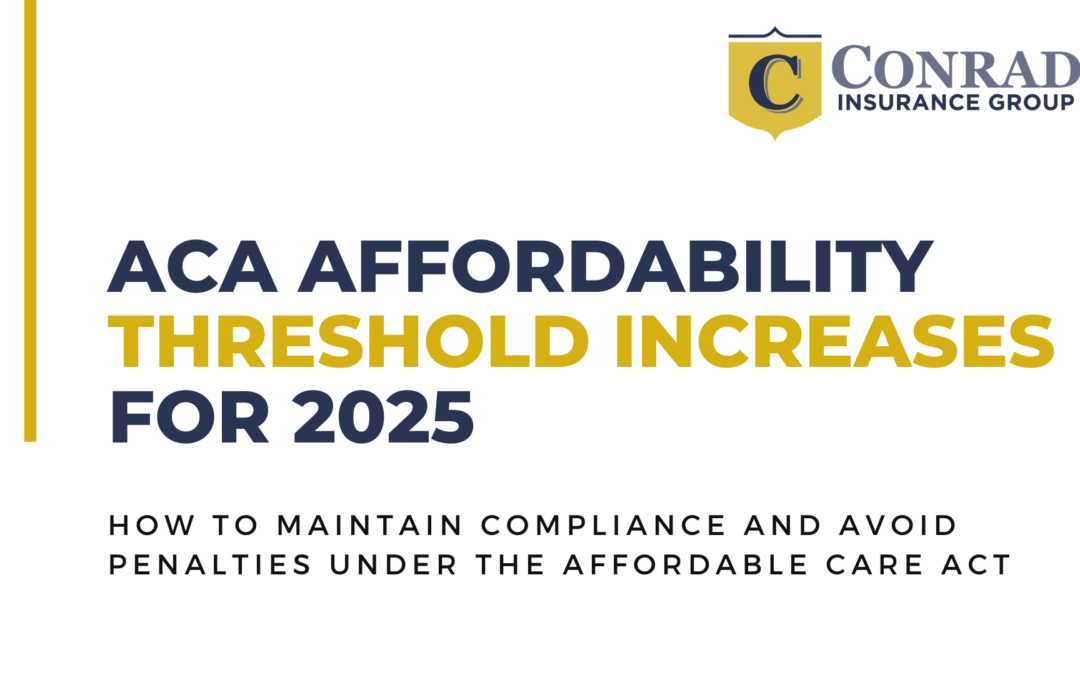As you look ahead to the new plan year, it’s critical to note the new affordability threshold under the Affordable Care Act (ACA). In 2025, the threshold will be 9.02%. That’s up from the 2024 level of 8.39% and reverses a trend of three straight years with decreases. The percentage is indexed each year.
It’s important to note how any change in percentage will affect the premiums you can charge employees while meeting the ACA’s affordability safe harbor. Failure to do so could result in ACA employer shared responsibility payments.
The requirements
The ACA requires applicable large employers to offer full-time employees a chance to enroll in an affordable health care plan that provides minimum essential coverage. The ACA defines “affordable” as a percentage of an employee’s household income. Applicable large employers are those with 50 or more full-time equivalent employees in the previous year.
The percentage applies to the lowest-priced, self-only coverage under your health plan. As noted, that percentage will rise to 9.02% for 2025.
Here’s how this could impact your organization if you use the federal poverty level safe harbor to meet ACA affordability requirements.
This safe harbor requires an employee’s share of health care premiums to be equal to or less than the affordability threshold of a certain percentage of the federal poverty limit in effect six months prior to the beginning of the plan year.
The federal poverty limit for 2024 is $15,060 for individuals in the mainland U.S. With the 9.02% limit for 2025, employers cannot charge employees more than $113.20 a month for health care premiums. This is up from $101.94 in 2024.
In addition to the federal poverty level safe harbor, you can select the Form W-2 safe harbor or the rate-of-pay safe harbor. These are based on an employee’s Form W-2 compensation and hourly or monthly pay, respectively. Talk to your benefits adviser for more information on which safe harbor works best for your plan.
The penalties
Suppose you use the exact amount under the federal poverty level safe harbor to set what you charge for employee contributions. In that case, you must amend the 2025 amount for your lowest-priced, self-only option providing minimum value.
If you fail to adjust this amount for employee contributions, your plan coverage will be considered unaffordable. You will then be subject to penalties for every employee who obtains subsidized public health coverage in the individual marketplace. In 2025, the penalty is $4,350 per employee.
Maintain compliance
To ensure plan compliance, contact one of our Conrade benefits advisers. They can provide guidance on coverage options, safe harbors and ACA affordability requirements.

